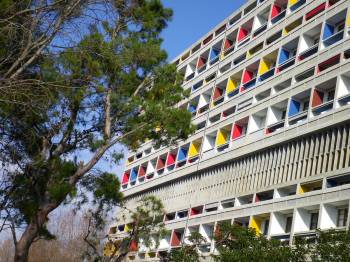Note: The author was WINNER of the Friedrich Holderlin Prize in 2014, and was SHORTLISTED for the Man Booker International Prize in 2013.
“With Ivona the time went by incredibly slowly, full of painful silences. She gave monosyllabic replies to my questions, and it was a constant struggle to prolong the conversation…Ivona’s declaration [of love] had been embarrassing, just like the idea of being seen in public with her, but even so the thought of her love had something ennobling about it.”
Swiss author Peter Stam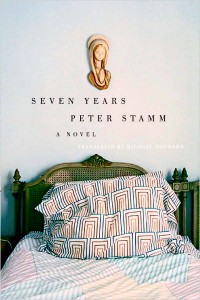 m has accomplished a remarkable feat. He has written a fascinating story in which marriage is less the result of true love than it is of logic, the resulting union resembling a merger more than a deeply human relationship; passion here has more to do with self-gratification than with true feeling; and Alex, the main character, is so ego-centric that it is difficult to imagine any thoughtful, sensitive woman wanting to have anything at all to do with him. But that is part of the point. None of the three main characters here—Alex and his two lovers–are emotionally mature, and none of them grow much during the almost twenty years that pass in the course of this novel. Still, by the end of the novel, the reader will have a fine picture of what true love is, however negatively the characters behave in their own lives and however much damage they may do to the other people who share their lives. The negative emphasis actually accentuates the wonder of the positive for the reader.
m has accomplished a remarkable feat. He has written a fascinating story in which marriage is less the result of true love than it is of logic, the resulting union resembling a merger more than a deeply human relationship; passion here has more to do with self-gratification than with true feeling; and Alex, the main character, is so ego-centric that it is difficult to imagine any thoughtful, sensitive woman wanting to have anything at all to do with him. But that is part of the point. None of the three main characters here—Alex and his two lovers–are emotionally mature, and none of them grow much during the almost twenty years that pass in the course of this novel. Still, by the end of the novel, the reader will have a fine picture of what true love is, however negatively the characters behave in their own lives and however much damage they may do to the other people who share their lives. The negative emphasis actually accentuates the wonder of the positive for the reader.
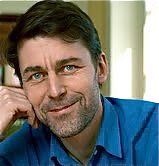
Set primarily in Munich, the novel opens during an art exhibition and reception given to celebrate a new collection by Antje, a sixty-year-old artist who, some years ago, played a role in bringing about the marriage of Alex and Sonia, now architects with their own successful firm. Significantly, Alex is standing outside the gallery, looking through a window, while Sonia, “the perfect socialite,” is enjoying the crowd inside. Through flashbacks to 1989, eighteen years earlier, when Alex was a student during the heady days in which the Berlin Wall came down, the author sets up the story of his relationships, first with Ivona and ultimately with Sonia. Living in a bungalow which was once part of the Olympic Village, Alex has been studying for his final exams when he meets Ivona, a homely girl from Poland who cannot carry on a conversation and appears to have few opinions. Eventually, Alex takes her to her residence hall, and though he has no interest in her, she is clearly smitten with him. Though she remains chaste, at that point, Alex notes that “I had the feeling Ivona was giving herself to me, and I had absolute power over her, and could do whatever I liked with her. I felt utterly indifferent to her. I had nothing to lose and nothing to be afraid of.”
When he meets S onia, also in the school of architecture, soon after, he is preoccupied with the enormous social gap between them, Sonia, from a wealthy family, and he, a struggling student. “I couldn’t picture her as my girlfriend, not in bed, not even naked…She was like one of those dolls whose clothes are sewn onto their bodies.” Though he and Sonia begin to see each other socially, he still visits Ivona, with whom he feels “a kind of overwhelming safety…[though] it was only in bed that I liked being with her…The thing that kept me fascinated was her utter devotion.” His relationship with Sonia begins to develop platonically and then more romantically, but “[With her] I didn’t feel so much in love as happy and confident and maybe proud.” He becomes increasingly obsessed with Ivona sexually, however, though she embarrasses him, and he does not want his friends or Sonia to know about her.
onia, also in the school of architecture, soon after, he is preoccupied with the enormous social gap between them, Sonia, from a wealthy family, and he, a struggling student. “I couldn’t picture her as my girlfriend, not in bed, not even naked…She was like one of those dolls whose clothes are sewn onto their bodies.” Though he and Sonia begin to see each other socially, he still visits Ivona, with whom he feels “a kind of overwhelming safety…[though] it was only in bed that I liked being with her…The thing that kept me fascinated was her utter devotion.” His relationship with Sonia begins to develop platonically and then more romantically, but “[With her] I didn’t feel so much in love as happy and confident and maybe proud.” He becomes increasingly obsessed with Ivona sexually, however, though she embarrasses him, and he does not want his friends or Sonia to know about her.
After the somewhat tedious minutiae of Alex’s relationships with Sonia and Ivona during their student days, the author flashes forward eighteen years to the party at the gallery with which the novel opens, then back eleven years as Stamm explores Alex’s eventual marriage with Sonia and his continuing obsession with Ivona.
Stamm tells his story in efficient, straightforward prose, much like the character of Alex, the narrator, as Stamm develops his narrative and themes from the inside out while the characters interact (or, more often, act in parallel). Startling images enliven the narrative, despite the dull, unreflective characte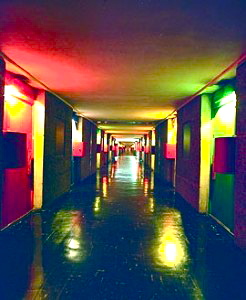 rs, again in keeping with Alex’s own personality. Alex happily accompanies the much more creative Sonia on trips to Marseilles and Stuttgart to see brilliant examples of architecture by Le Corbusier, her favorite, while he prefers the more traditional work of Aldo Rossi, much of it in Berlin. Their architectural company grows, employing twenty people, with Alex handling the business end and Sonia doing the creative. The novel concludes three years after the party that takes place at the gallery in the opening scene.
rs, again in keeping with Alex’s own personality. Alex happily accompanies the much more creative Sonia on trips to Marseilles and Stuttgart to see brilliant examples of architecture by Le Corbusier, her favorite, while he prefers the more traditional work of Aldo Rossi, much of it in Berlin. Their architectural company grows, employing twenty people, with Alex handling the business end and Sonia doing the creative. The novel concludes three years after the party that takes place at the gallery in the opening scene.
Tightly organized and unusual in its focus on characters who are insensitive and self-involved, the novel has more intellectual than emotional appeal (again, appropriate to the characters). Alex is a clueless and ultimately loathsome egotist in his behavior, certain to anger the women who read this novel. Ivona might have been a sympathetic character, but she is naïve, immature, and dependent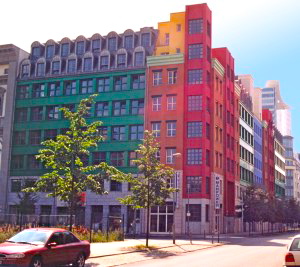 on others, even as she ages, a victim rather than an active participant in her own life. Ultimately, the characters do change in the course of the twenty years of this novel’s action, but it is up to the reader to decide to what extent each will be able to understand and feel real love—or even become fully human.
on others, even as she ages, a victim rather than an active participant in her own life. Ultimately, the characters do change in the course of the twenty years of this novel’s action, but it is up to the reader to decide to what extent each will be able to understand and feel real love—or even become fully human.
ALSO by Peter Stamm: ALL DAYS ARE NIGHT, AGNES, TO THE BACK OF BEYOND
Notes: The author’s photo appears on his website: http://www.peterstamm.ch
An Olympic Village bungalow, about 400 square feet, by Floran Schutz, from his extraordinary collection, which includes some especially stunning photos of the Munich subway. (Don’t miss these, if you love photography!) http://www.flickr.com
Le Corbusier’s Cite Radieuse in Marseille, an apartment complex in Marseille: http://mr-erno.blogspot.com
Interior hallway of Cite Radieuse: http://lagrette.free.fr
Building by Aldo Rossi in Berlin, traditional style, funky color: http://www.panoramio.com
